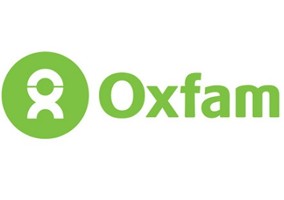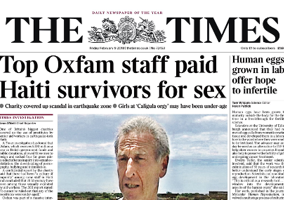I was recently asked to give evidence, alongside Helen Evans, the former global head of safeguarding at Oxfam, to the International Development Committee’s investigation into sexual exploitation in the international aid sector. During the session, Nigel Evans MP asked whether I agreed that “the role of the media has been absolutely magnificent in exposing an area that, quite frankly, has been appallingly maintained”.
I could only agree. I was there to give evidence regarding the first time sexual exploitation in the aid sector had made global news back in 2002. On that occasion too, the media broke the story on a UNHCR/Save the Children report on sexual exploitation of refugee children by aid workers and peacekeepers in West Africa.
On both occasions, the global media attention and consequent public outrage galvanised policy-makers into action. In 2002, concerned parties in governments and the aid sector, despite stiff internal resistance, pushed through global policy change and co-ordinated action. Likewise, policy makers are again active in seeking a further step change in addressing this issue.
But should it take a media story to focus minds on the issue of beneficiary abuse by aid workers? The media, while a hugely powerful tool, can also be a blunt and capricious instrument. The recent media storm has consumed the entire aid sector in its wake. Organisations and individuals at the centre of news stories have been instantly found guilty as charged; victims tracked down and made to relive their experiences in the public glare, and those who spoke up against large institutions faced retaliation, including threats of legal action.
Victims cannot wait
The reality is that the media cannot, and should not, be expected to report on these issues to the degree needed. Sexual exploitation in the aid sector is a daily and ongoing concern, and is therefore not necessarily always newsworthy. Victims cannot wait for the rare chance that such events will make global headlines. The Oxfam Haiti debacle only came to light seven years after the event, while the West Africa ‘sex for aid’ stories had been shelved for many a year before finally surfacing in 2002.
An ombudsman is the only rational answer to addressing safeguarding concerns in a timely way. It would bring issues to the attention of policy-makers without the need for a global scandal first. In effect replicating what has just happened minus the media and public uproar; an institutionalised right of external appeal for beneficiaries and their advocates when internal channels of complaint fail.
The idea of a humanitarian ombudsman first emerged in the 1990s, but has subsequently morphed into various self-regulatory initiatives – these continue to strengthen good practice but lack the true independence and authority to deal with such controversies.
There are many potential models of oversight ranging from an international ombudsman that covers all operations and institutions, through to an ad hoc mechanism to review UN complaints in real time, or strengthened capacity for the charity commission to oversee UK aid agencies. While government works with global partners to close gaps in the accountability of international aid, it can, in the interim, act to enable beneficiaries of UK-AID to be heard.
How an ombudsman might work
The government could adopt what might be described as an ‘ombudsman-lite’ model, which enables a right of appeal for those who have suffered egregious harm through the delivery of UK-AID. Since reporting of serious incidents by agencies to donors, like DfID, is already a contractual requirement, this function would not be dissimilar. It would simply be a step up which allows a review to arise from an appeal by victims and their advocates. The advantages of such an approach are that:
- The link to grant-making, backed by the power to withhold or award funding, means enforcement is not reliant on functioning systems of criminal or civil law.
- It has the potential to encompass foreign aid organisations, including multilateral initiatives, in a competitive funding environment where much programming is already “donor-led”.
- There is scope for collaboration between different governments and funders.
- Bureaucracy is at a minimum since the primary responsibility for investigating complaints remains within organisations, but the potential of external oversight drives up internal good practice in prevention and response.
- In common with many regulatory bodies, independence and transparency are safeguarded by having decisions taken by an ad hoc external committee, operating under the scrutiny of the media, parliament and public. The media thus continues to play a vital role but one that is more focused on culpable organisations and the overseer itself.
- Such a mechanism would, at least, start to cover some aid programmes and take a step towards increased accountability. As we have seen from recent events, individual cases can have a powerful effect across the whole sector.
We all have access to many domestic level ombudsmen who operate in exactly this type of way and covering many different sectors and issues. It is high time that beneficiaries who have suffered harm as a result of the aid process, and without recourse to viable legal remedies, enjoy the same rights and have a way of raising their concerns at the highest level, so that, further abuses are prevented.
Asmita Naik is a consultant on international development and human rights. She co-authored the UNHCR/Save the Children 2002 report on sexual exploitation in the aid sector in West Africa. She can be contacted at: [email protected]
|
Related Articles











